London Museum of Water & Steam
The London Museum of Water & Steam is located in the former Kew Bridge Waterworks. It contains a collection of rescued and original steam pumping engines including the largest surviving single cylinder beam engine in the world. We found it impossible to photograph the entirety of these engines due to their gigantic size.
The museum also contains diesel engines, electric pumps, a narrow-gauge railway, and a whole range of equipment that tells the story of how London grew thanks to its water supply. It hosts a number of interactive exhibits guaranteeing a fun visit for the entire family.
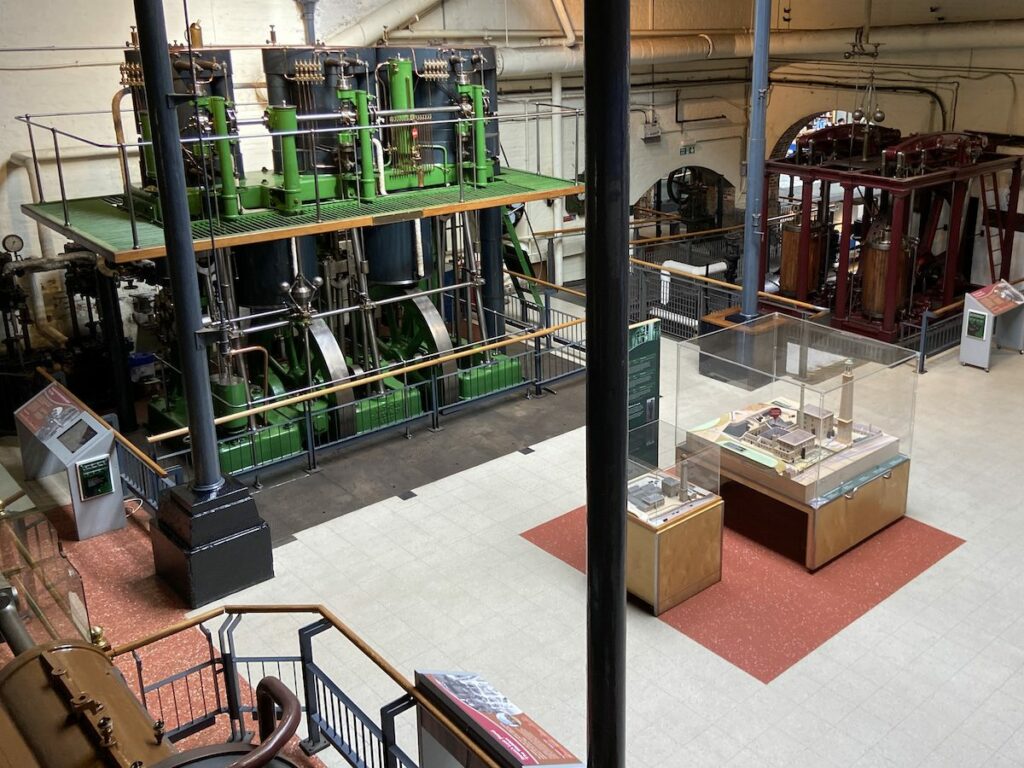
Key info
| Location | Green Dragon Ln, Brentford, TW8 0EN |
| County | Greater London |
| Waterworks opened | 1838 |
| Museum opened | 1975 |
| Heritage category | Listed Building Grade I & Grade II |
Visiting guide
Café
Toilets
Gift shop
What can I expect when visiting London Museum of Water & Steam?
There’s a lot to see at the museum and we cannot fit it all into this guide; therefore, we are going to cover key points of interest.
After entering the museum, you will reach a huge hall that once housed a row of boilers. It now contains displays detailing the history of humanity’s water supply achievements, the development of London’s water distribution system, and modern initiatives for water conservation. There are also many interactive exhibits, our favourite is a row of models that demonstrate various methods of pumping water used by the Romans to the modern age.
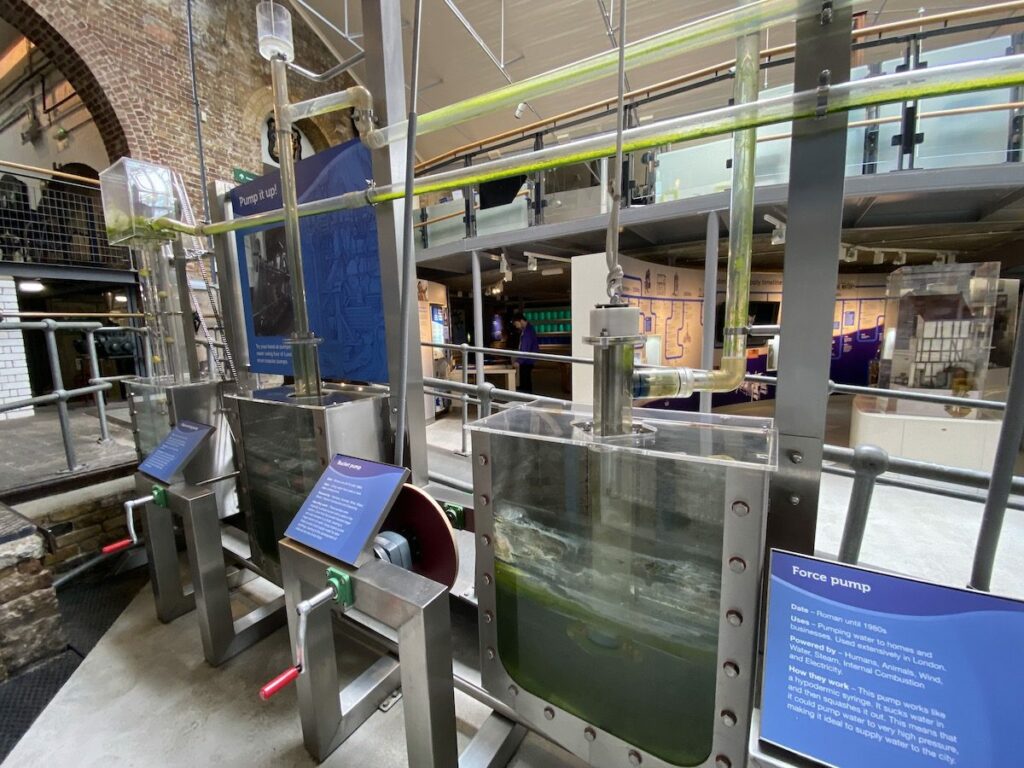
In south-east corner is a Lancashire boiler, which was used to create steam for pumping engines. It was brought to the museum from Chiswick Public Baths and is roughly half the size of the boilers that existed at Kew Bridge Waterworks. Can you imagine crawling inside to clean these giants?
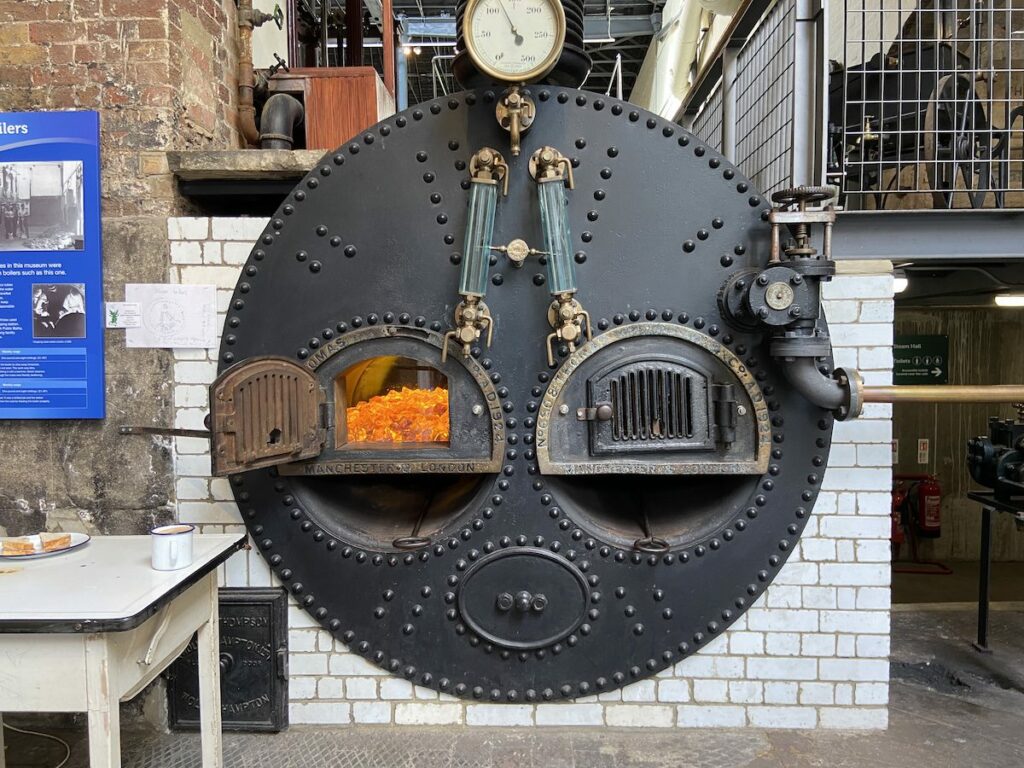
Head to the next hall behind the boiler containing the steam engines installed as museum exhibits. ‘The Dancer’s End’ engine is unusual because it originally pumped water on a private estate near Tring. Engines of this type were commonly used in the textile mills of Lancashire and Yorkshire. It was built in 1867, retired circa 1943, and reassembled in the museum in 1979.
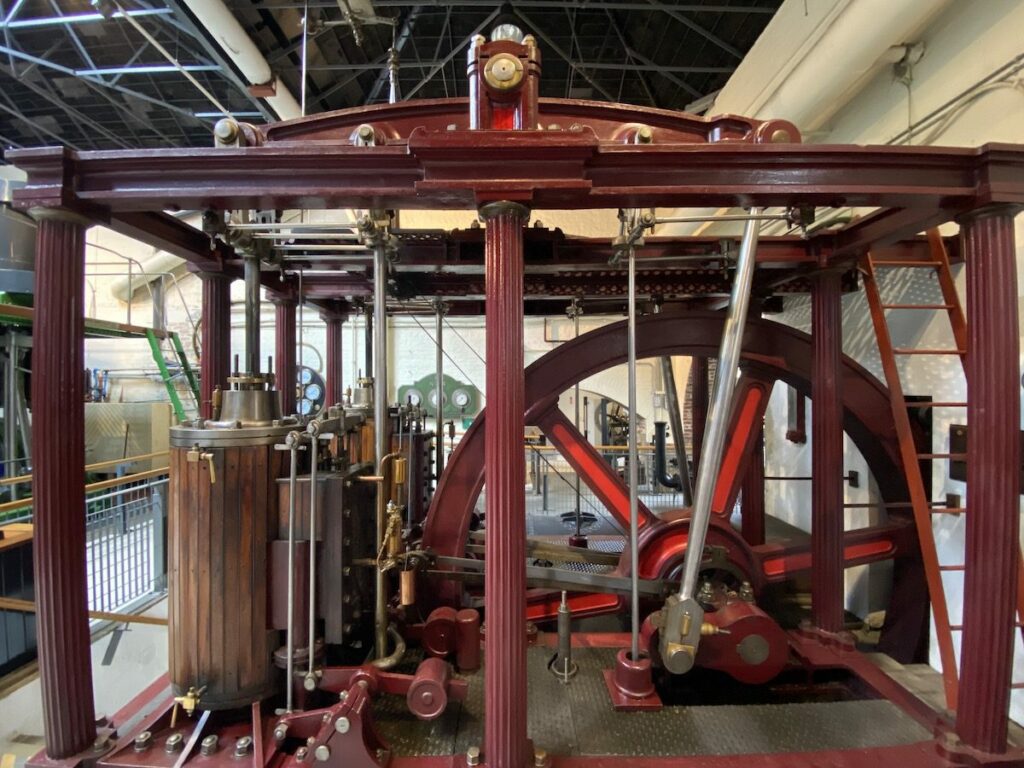
‘The Waddon’ is a horizontal cross-compound engine that was used to pump water in Croydon. The engine drove three pumps, two for lifting water from a well before the third moved water to a reservoir and the mains supply. It was built in 1910, retired in 1983, and restored at the museum in 1990.
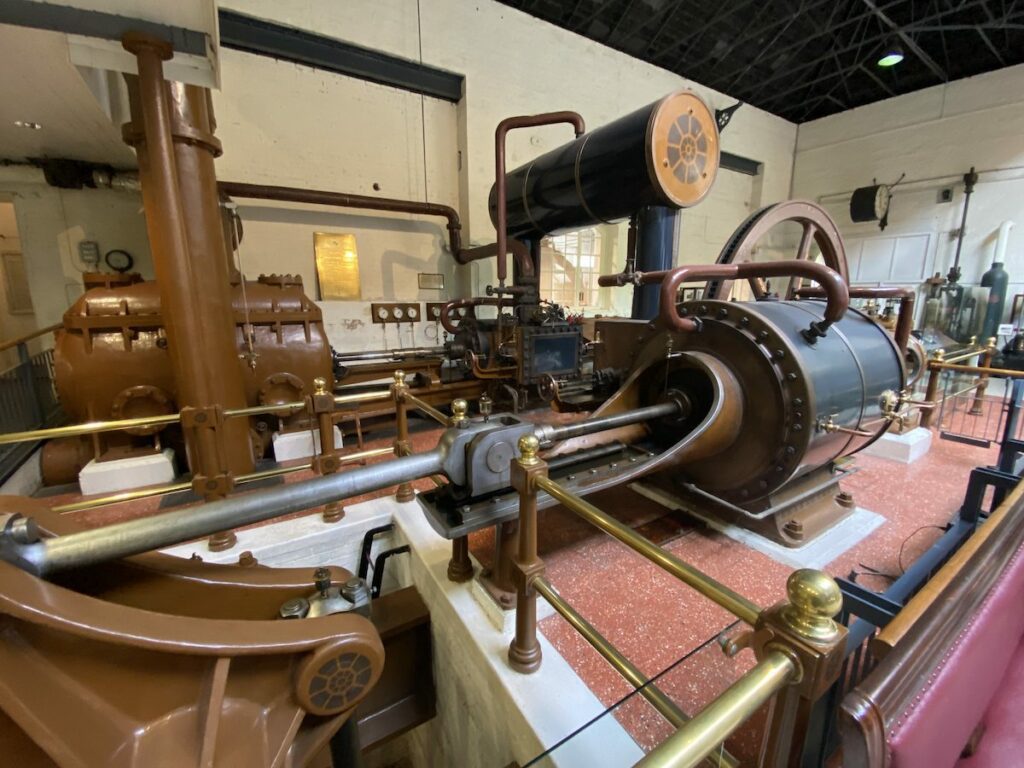
The triple expansion engine is one of the most efficient machines for supplying water because it expands steam it consumes in three separate stages. It can run non-stop for long periods of times without requiring attention.
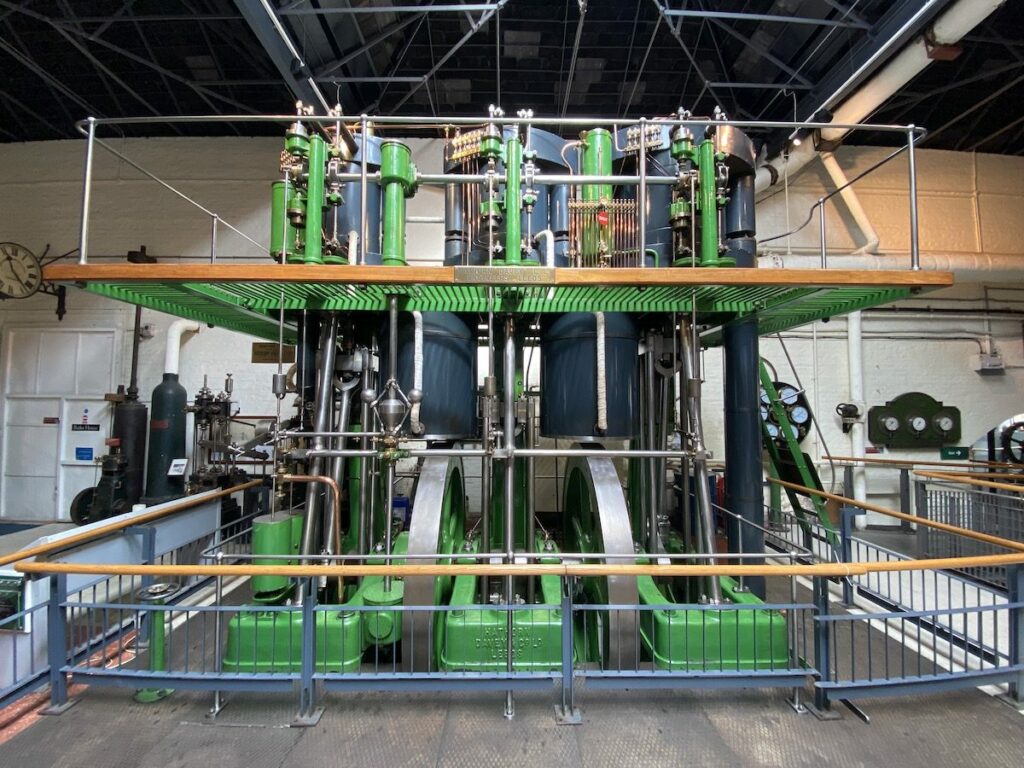
There are more rescued engines and equipment to see in this hall. Once you are ready to move on, head to the original engine houses.
The oldest of these houses contains a Boulton & Watt beam engine. Constructed in 1820 for a waterworks site in Chelsea, it was one of a pair of engines brought to Kew in 1840. Six years later, both engines were converted to use the more efficient Cornish Cycle, which involved substantial rebuilds due to requirement of handling steam at higher pressures. Both engines were retired in 1944 and the east engine was scrapped leaving the one you see today.
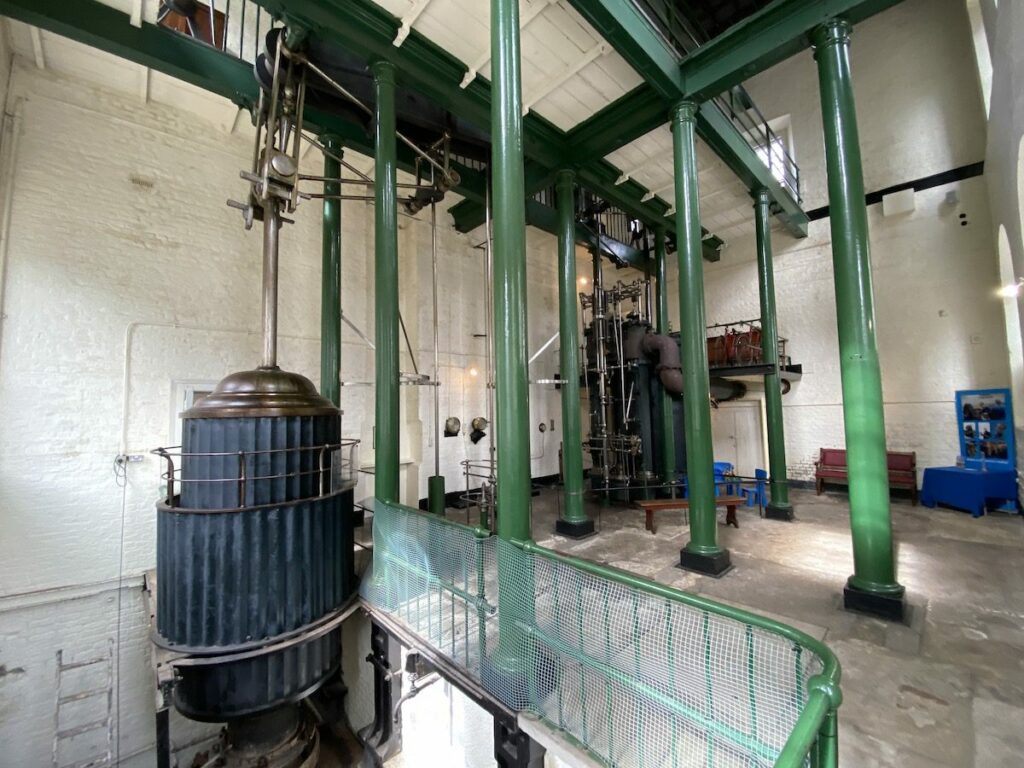
The next house contains a huge 90-inch diameter Cornish beam engine. It was powerful enough to supply water to the upper floors of multi storey buildings. It was installed in 1846 and retired in 1944. Despite running almost non-stop nearly for nearly 100 years, it rarely broke down or required repair.
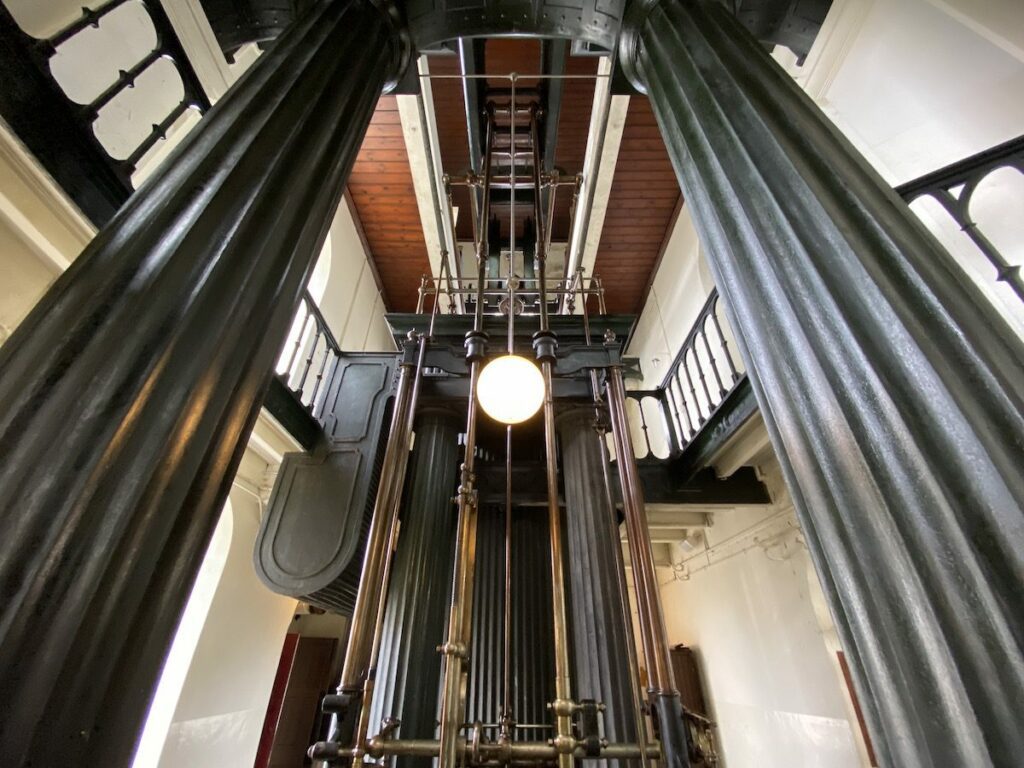
Move on to the Cornish Bull engine, the only surviving example of this engine type still in operation, and in its original location. The steam cylinder in inverted over the pump and so no beam is required. Bull engines were popular because they were cheaper to purchase and produced the same power output as a beam engine and required less space. This engine was installed in 1857 and retired in 1934.
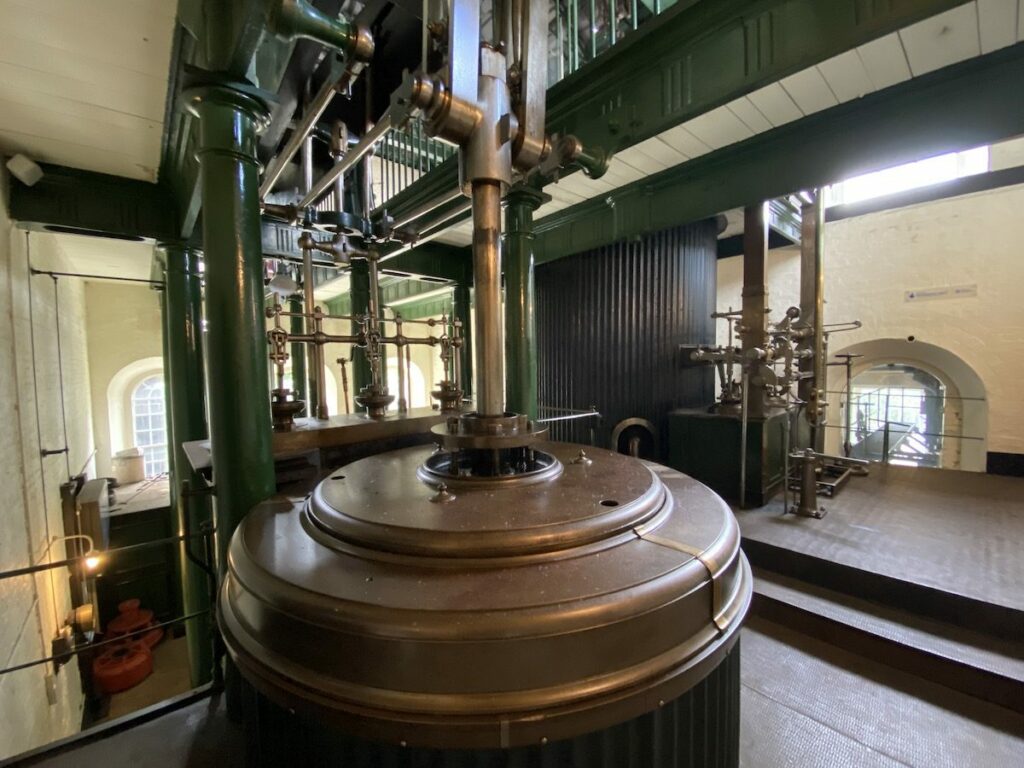
The final original engine on display is the colossal 100-inch diameter Cornish beam engine, the largest surviving single cylinder beam engine in the world. It was one of the last to be built for pumping water, the design was even out of date the day it went to work in 1871. Eight years later, the beam snapped amid shock based on confidence that the sheer size of the engine made it unbreakable. The beam was repaired, and the engine ran well until retirement in 1944; however, the repair has made attaining insurance difficult and so the engine sits silently waiting for its return to glory.
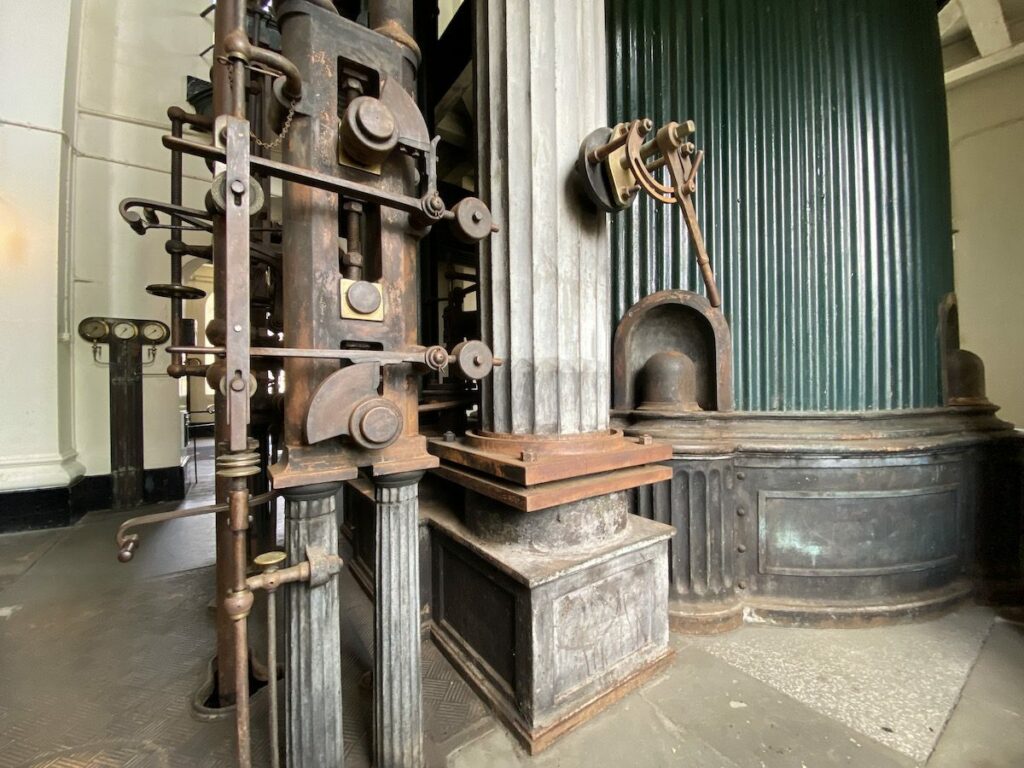
The final hall houses the electric pumps and equipment that replaced its steam predecessors working alongside diesel combustion engines. There are so many examples of machinery, it is impractical to feature all of them in this guide.

A notable exhibit is the Reader engine that produced electricity using steam power. It is similar to those first used at Kew Bridge to produce electricity mainly for powering the lights. Constructed between 1907-1910 by Reader & Co. of Nottingham, it is an early example of the transition to electricity from coal fired steam.
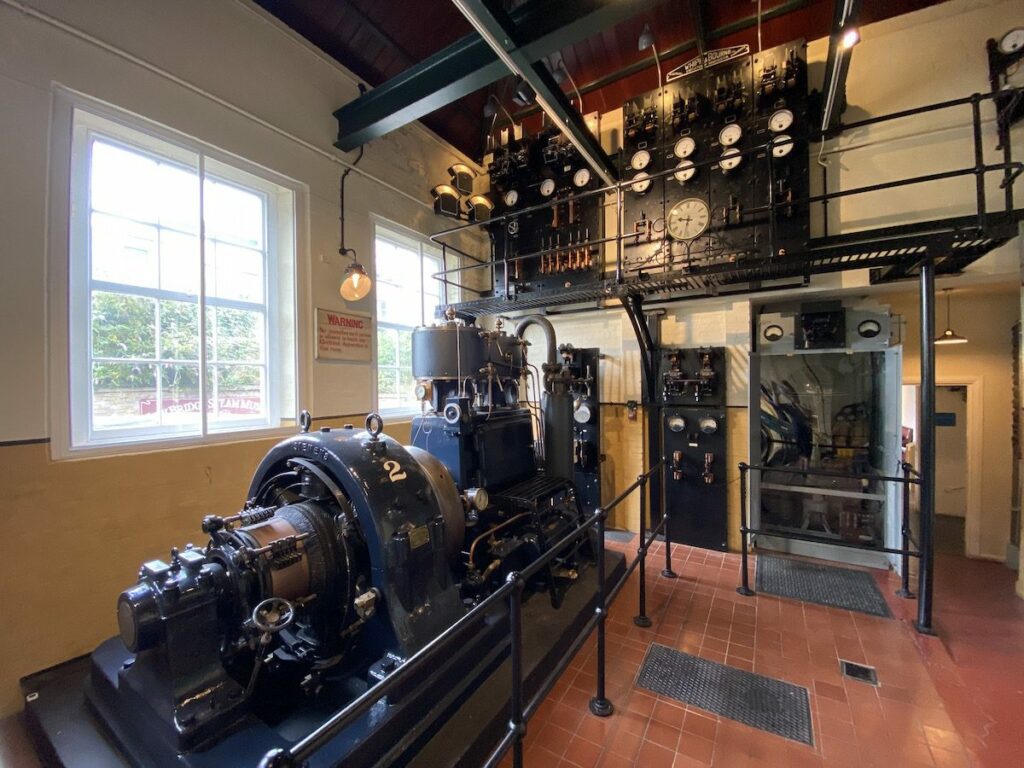
It’s time to head outside into the rear courtyard where you will see a gigantic overshot waterwheel that originally pumped water to the village of Maiden Bradley and a private estate in Wiltshire, which sat at the top of Mapperton Hill.
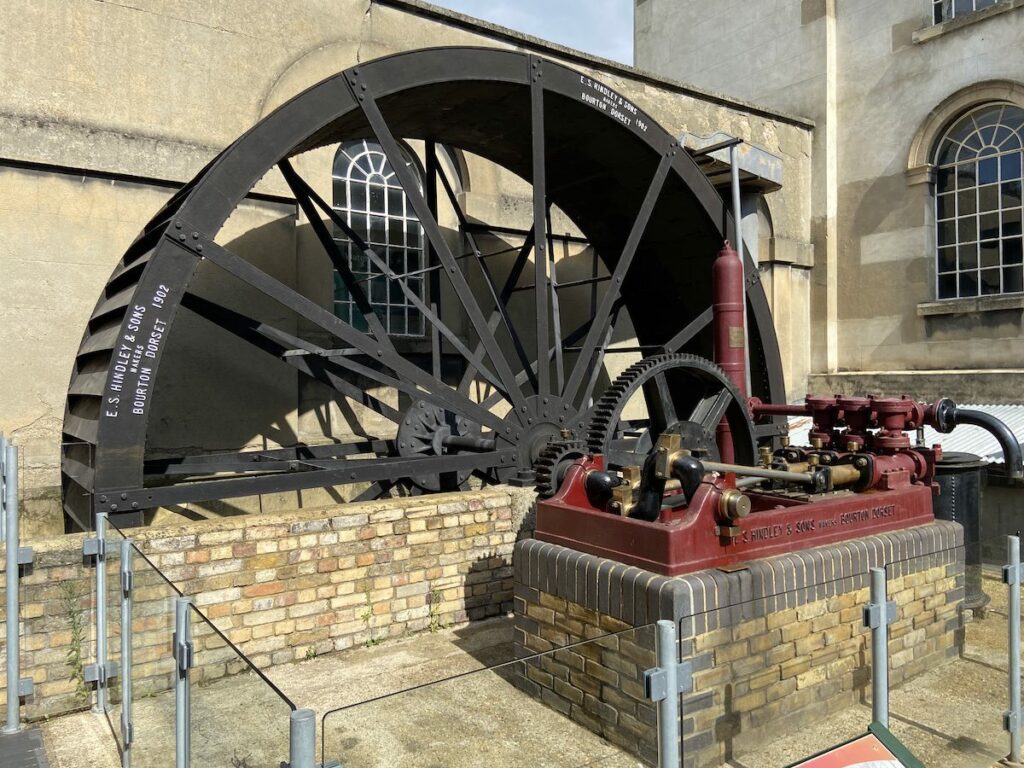
Look up at the looming standpipe tower. Commonly mistaken for a chimney, this tall structure is essentially a winter coat to prevent a series of vertical standpipes from freezing. These pipes were used to regulate the water pressure as it pulsated due to the strokes of steam pumping engines. The tower was also used for a lookout during World War Two. The museum offers tours of the tower on special weekends.
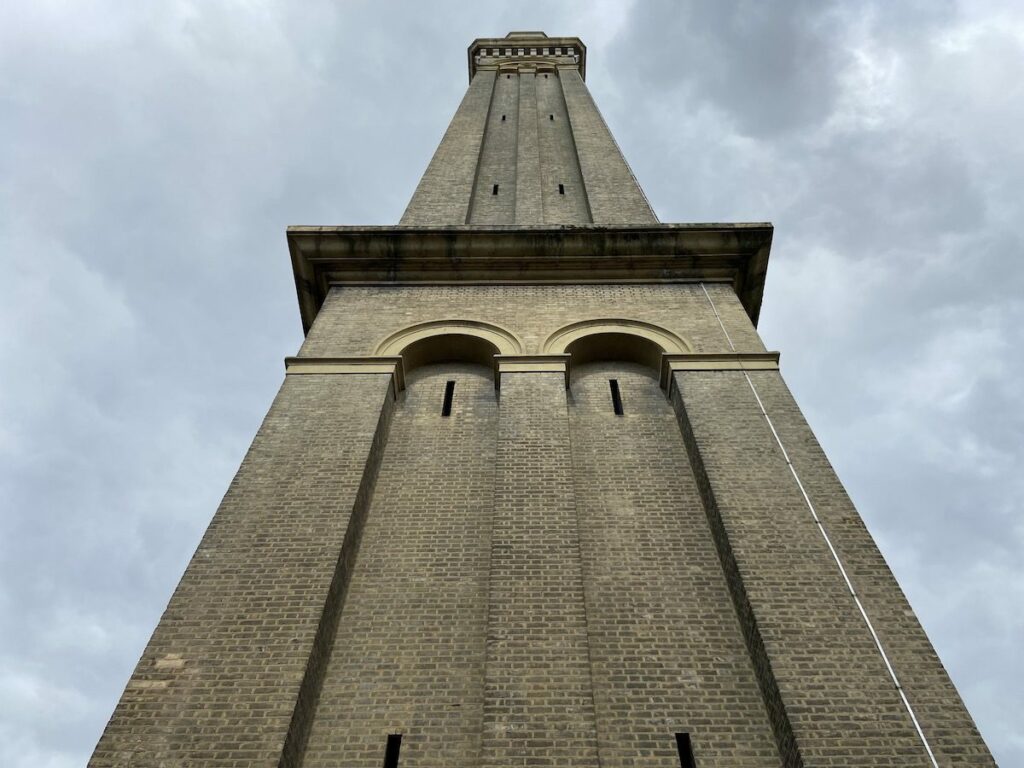
There is also a narrow-gauge railway that runs services on special weekends. It is not original; however, it replicates the waterworks railway that would have existed to carry coal for the boilers and sand for the filter beds.
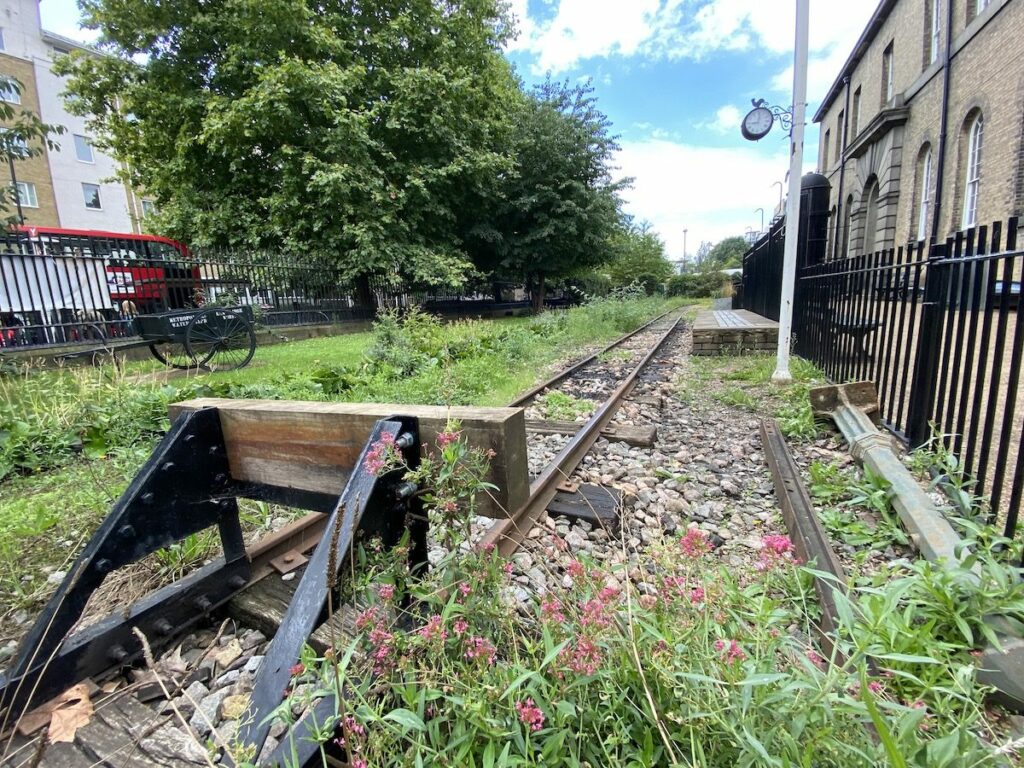
This is where we end our online tour, but don’t be fooled, there is so much more to see at the museum, including the gardens, diesel engine house, and workshops. Do take your time to see everything as it is definitely worth the experience.
How long does it take to visit the London Museum of Water & Steam?
You will need at least 2 hours 30 minutes to see all exhibits in the museum. Allot more time for special weekends or days when the engines are in steam.
Does the museum hold steam days?
Yes, some of the steam engines are demonstrated on special steam days, check the museum website for more info.
Does the museum offer food and drink?
Yes, the museum has a café near the front entrance.
How do I get to London Museum of Water & Steam?
It’s best to avoid travelling to the museum by car because it has a limited car park that closes during local sporting events. Kew Bridge railway station is 200 metres away. The nearest tube station is Gunnersbury just over a kilometre away. There are also bus stops on the A315 connecting to the London transport network.
History of the London Museum of Water & Steam
1811 – The Grand Junction Water Works Company (GJWWC) is formed and constructs their first waterworks near the Grand Junction Canal, hence the name. The works provide water pumped from the canal; however, as London’s population grew, so did the level of pollution.
1820 – The canal can no longer provide a sufficient amount of clean water; therefore, the company moves their waterworks to a new location next to the River Thames in Chelsea.
1838 – Pollution in the River Thames has increased, thousands of people have died from cholera, and new clean water legislation is on the horizon. The company must move again further upriver to Kew Bridge, where the river is a lot cleaner. Kew was an unpolluted area at the time consisting mostly of market gardens. The company install a single acting beam engine manufactured by Maudslay Sons & Field of Lambeth.
1840 – A pair of Boulton & Watt beam engines are transferred from the site at Chelsea to Kew Bridge.
1846 – The pair of Boulton & Watt beam engines are converted to use the more efficient Cornish Cycle and the 90-inch diameter Cornish beam engine manufactured by Sandys, Carne & Vivian of Hayle.
1852 – The government passed the Metropolis Water Act, which required that water should only be taken from the non-tidal section of the river. The company built a new intake and pumping station at Hampton to send raw river water to Kew Bridge for filtration and onward supply.
1857 – The Cornish Bull engine manufactured by Harvey & Co of Hayle is installed.
1867 – The brick standpipe tower is constructed.
1871 – The 100-inch Cornish beam engine also manufactured by Harvey & Co is installed and is estimated to have been the largest engine in the world at the time.
1900 – Kew Bridge Waterworks is at the height of its operational capacity as a major part of London’s water supply. The company’s profits increased and so did London’s population. The waterworks also hired 80 men at this time.
1902 – Following years of substantial profits and infrastructure under-investment, the government created the Metropolitan Water Board (MWB), which acquires all eight London water companies creating the largest water supply network in the world.
1930s – Diesel engines are installed at Kew Bridge, which gradually replace their steam powered predecessors as part of a modernisation plan.
1944 – All steam engines fall silent; diesel and newly installed electric engines take over pumping following the provision of a suitable power supply. The number of required staff falls, and the waterworks is designated a ‘Museum Pumping Station’ by the MWB. Many steam engines are donated by the MWB for heritage preservation, a remarkable achievement considering World War Two was raging and the requirement of metal was critical.
1959 – Kew Bridge transitions mainly into a service site for the MWB. Many workers retire, the reservoirs and filter beds are closed down. The coal stores and boilers are cleared, and their space is repurposed. The waterworks gradually starts to close down.
1974 – The Kew Bridge Engines Trust is formed and persuades the MWB to let them take on the challenge of opening the waterworks to the public.
1975 – The waterworks open as Kew Bridge Steam Museum and restores their first engine, the Boulton & Watt, to full operation.
1986 – A temporary pumping station was constructed to replace Kew Bridge, all electric pumping engines fall silent, many are scrapped, some are preserved at the museum.
1997 – The last of the water company staff had left leaving operations completely to the museum, which goes on to win an Engineering Heritage Award from the Institution of Mechanical Engineers.
2008 – A second Engineering Heritage Award is obtained for the restoration of the Cornish Bull engine.
2012 – The temporary pumping station that replaced Kew Bridge in 1986 is demolished. Today’s water pumping is largely conducted in the main shafts under the waterworks and requires no buildings above ground.
2014 – The museum is renamed the London Museum of Water & Steam following a major refurbishment and rebranding project.
2016 – The museum wins the Dorothea Restoration Award from the Association for Industrial Archaeology.
Sources
- Much historical content sourced from museum information boards.
- London Museum of Steam & Water (2019) Guide Book. Chorley: London Museum of Steam & Water.

 Avoncroft Museum of Historic Buildings
Avoncroft Museum of Historic Buildings